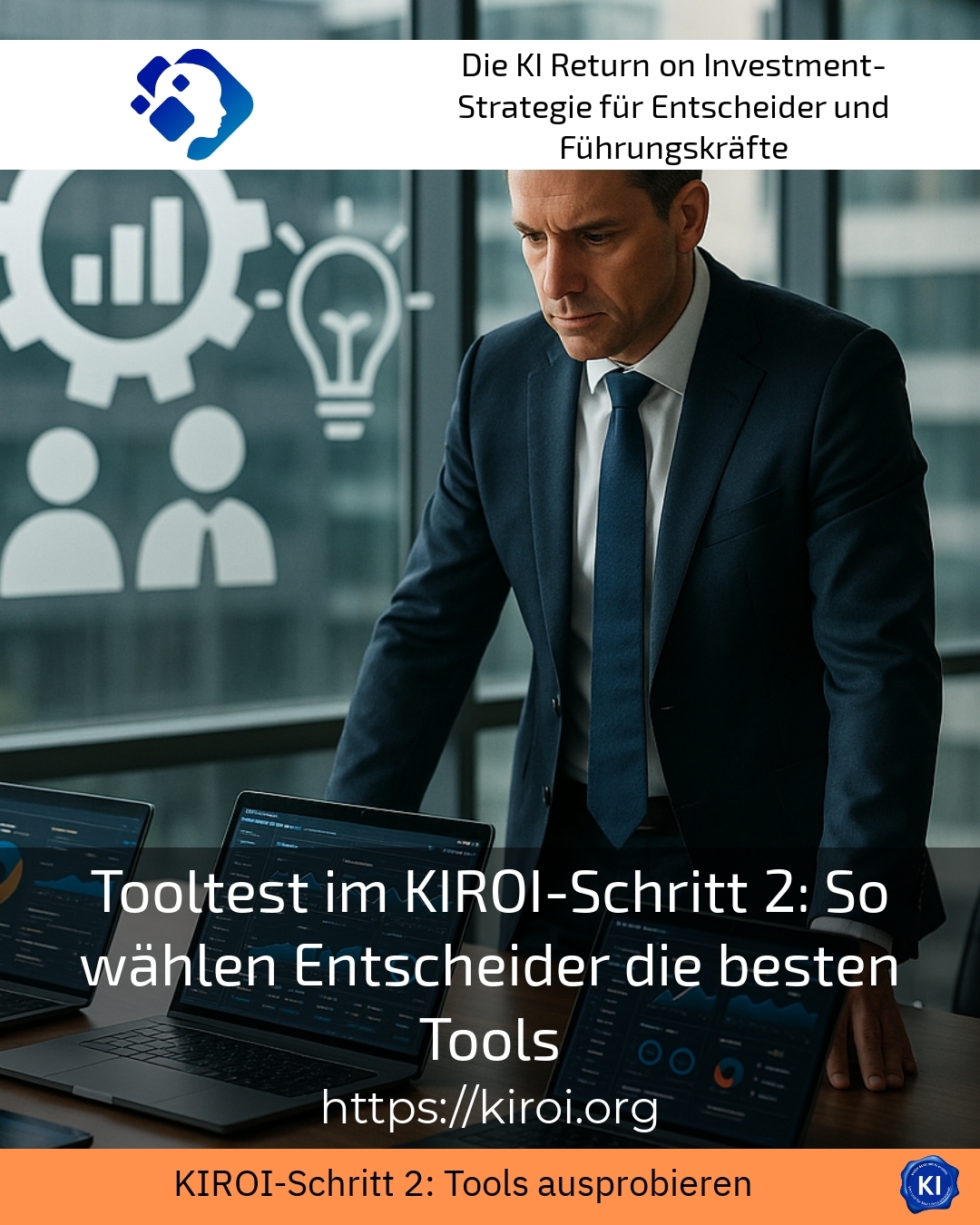In the context of complex projects, careful tool testing proves to be an indispensable companion. In KIROI step 2 in particular, it helps decision-makers to select the best tools in a targeted and systematic manner. The challenge lies not only in having an overview of available tools, but also in identifying and successfully implementing the optimum tool for individual requirements.
The importance of tool testing for well-founded decisions
A tool test within the KIROI system is more than just a superficial check of individual functions. It is a structured process that starts with clearly defined requirements. Decision-makers first define the exact project context and the most important use cases. In logistics, for example, precisely analysed tools for demand forecasting and route optimisation help to use resources more efficiently and reduce costs. Marketing managers rely on automated campaign solutions that are analysed using tool tests to determine how flexibly they react to changes in target groups and trends. In customer service, on the other hand, the use of chatbots is being tested in order to shorten response times and increase user satisfaction.
The integration of different perspectives plays an important role here. Specialist departments, IT experts and end users are involved in the process at an early stage. This prevents a tool from being a theoretical fit but encountering acceptance problems in practice. Systematic feedback during the test phase ensures continuous improvement and supports the decision as to which tool will be used in the long term.
Best practices from different industries in the tool test
In the field of logistics, for example, decision-makers are evaluating AI tools that enable better supply chain planning through real-time data. The results show that sources of error can be minimised and fleet utilisation optimised at the same time.
Marketing departments are increasingly testing intelligent tools that analyse customer behaviour and thus enable automated, personalised communication. Targeted tool testing is used to compare providers with one another in order to select a solution that can be flexibly integrated into existing CRM systems and reduces the workload.
In the area of customer service, the tool test helps to evaluate chatbots and digital assistants in a practical way. It checks how well they respond to different customer enquiries and whether they can be easily adapted to new requirements. This increases customer satisfaction and at the same time supports employees by relieving them of routine tasks.
BEST PRACTICE with one customer (name hidden due to NDA contract) A comprehensive tool test was used during an extensive project to digitalise the internal sales department. In addition to functionality, integration into existing systems and acceptance by the specialist users were also taken into account. The structured approach made it possible to precisely map the decision-making basis for a long-term investment and involve employees at an early stage. This led to a high level of acceptance and rapid implementation of the new tool.
Methodical approach to tool testing - structure for success
In KIROI step 2, the tool test follows an iterative process. Firstly, criteria are defined according to which the tools are evaluated. These can include aspects such as user-friendliness, integration capability, costs or specific functions. Decision-makers benefit from an accompanied evaluation in which coaches help them not to lose focus and avoid making too broad a selection.
User groups then test the individual tools within realistic scenarios. Transparent documentation of all results and feedback is important. This is the only way to clearly compare weaknesses and advantages and make an informed decision. Not only is the current performance evaluated, but the development potential is also taken into account. Specifically, companies in the manufacturing industry reported that adaptability to future processes played a key role in the tool test when selecting production control systems.
Practical tips for tool testing in companies
1. involve all relevant departments and end users in the tool test at an early stage in order to capture different requirements.
2. document all experiences during the test phase transparently to ensure comparability.
3. allow sufficient time for iterative adjustments, because tool tests are not a one-off ticking off of functions.
4 In addition to the technical features, also assess the organisational effort and integration into existing processes.
5 Check what long-term support and further development services the providers offer to ensure the sustainability of your investment.
Tool testing as the key to sustainable project success
The tool test in KIROI Step 2 helps decision-makers to structure the complex selection of suitable systems and make well-founded decisions. The practice-oriented testing provides companies with valuable impetus, which often also leads to process optimisation. Clients often report that the tool test not only minimises investment risks, but also significantly increases acceptance within the team. Especially in dynamic industries such as logistics, marketing and customer service, this process can provide a real competitive advantage.
transruptions coaching helps you to implement the tool test professionally and effectively. In this way, projects are supported and managed transparently - from the initial analysis to the final decision. Use the tool test as a central building block to find innovative solutions that fit perfectly and implement them sustainably.
My analysis
In the KIROI system, the tool test provides crucial support in selecting the tools that really suit the project and company from a wealth of options. The structured procedure, the integration of different perspectives and the transparent documentation lead to well-founded decisions. Practical examples from various industries illustrate the great benefits of tool testing in terms of increasing efficiency, cost optimisation and user acceptance. Decision-makers benefit from methodical support that facilitates the process and ensures sustainable success.
Further links from the text above:
Tool test: How decision-makers master AI tools in KIROI Step 2
Tool tests for decision-makers: How KIROI step 2 works
Tool test for decision-makers: successfully mastering KIROI step 2
For more information and if you have any questions, please contact Contact us or read more blog posts on the topic Artificial intelligence here.















